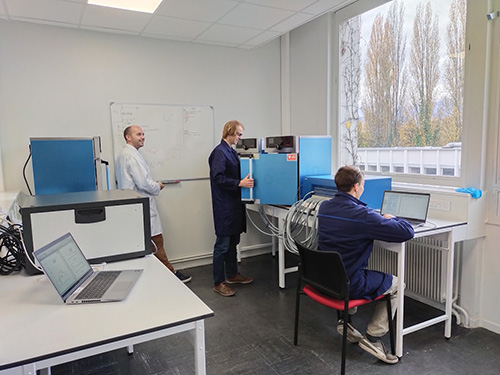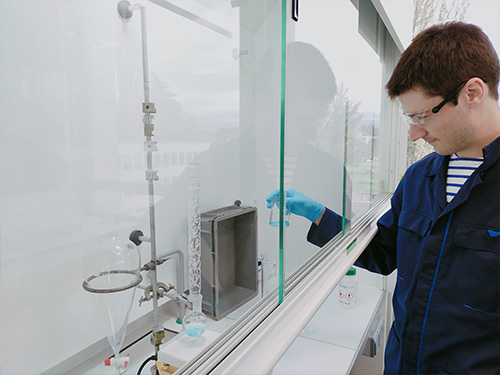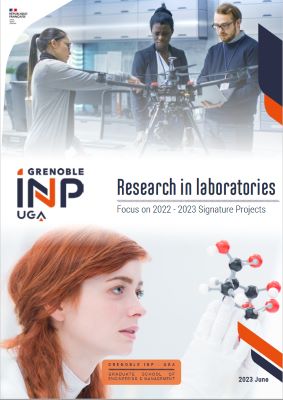From 2035, car makers will definitively end the production of internal combustion vehicles, progressively replacing them with electric-powered ones. With 23 million vehicles in France alone, the lithium-ion battery market is seeing exponential growth of 10 to 15% per year. It's a windfall for manufacturers, who are investing billions in gigafactories to mass produce them.
Meanwhile, scientists around the world are looking into the next generations of batteries. "
Because the flagship lithium-ion technology has reached its physical limits in terms of energy density, i.e., the amount of energy that can be stored per unit of weight or volume," says Renaud Bouchet, director of the joint laboratory, researcher at LEPMI* and professor at Grenoble INP – Phelma, UGA. Of course, this has a direct impact on vehicles' driving range. Currently, with a battery weighing 350 kilograms, an electric vehicle can only drive 400 kilometres on average
. "We need to double this figure. But to do this, we need to change the technology."
And it's not just energy density that needs to be improved: battery safety does, too. Currently, the ionic conductor between the two electrodes is a liquid organic solvent that can catch fire when the temperature rises. This risk could be avoided with solid electrolytes (composites, polymers, ceramics, etc.), which, in addition to improving safety, would allow us to forego the heavy, costly and insufficient thermal regulation systems currently integrated into cars.
Lithium metal: the holy grail of batteries
To find alternatives to lithium-ion, new materials need to be developed, like lithium metal. "
Replacing graphite with lithium metal as the negative electrode material is the holy grail of batteries. At equal weight, lithium metal has 10 times the capacity of graphite. Making this switch could increase batteries' energy density significantly." Blue Solutions, a Bolloré subsidiary, is putting this technology at the heart of the joint laboratory (Li2) that the company has created for five years with LEPMI. This joint lab will also study the (electrode/electrolyte) interfaces "
that play an essential role in this kind of system." Blue Solution agreed to another joint laboratory with a historical academic partner** on positive electrode topics, for which several options are being studied.
At Grenoble, researchers will study lithium metal's electrochemical behaviour to better understand and overcome the obstacles that have been making scientists' lives difficult for 70 years. "
The two main problems with lithium metal as a negative electrode material is that it passivates by consuming the active material," says Renaud Bouchet. "
Additionally, while it discharges, lithium oxidises into lithium ion, which accumulates on the following charge, but in a non-homogeneous way. This creates dendrites that can result in a short circuit. Ultimately, we end up with a dangerous battery that ages much too quickly." This phenomenon needs to be made reversible to create batteries that can reach at least 2,000 cycles, with solid electrolytes that can operate at room temperatures! With its central role, the joint laboratory (Li2) between Blue Solutions and LEPMI will be the interface between the work being done into the future generations of automotive batteries by the manufacturers' two (and perhaps three, in the near future) joint laboratories.

 * Laboratory of Electrochemistry and Physical-Chemistry of Materials and Interfaces: CNRS, Grenoble INP – UGA, UGA, USMB
* Laboratory of Electrochemistry and Physical-Chemistry of Materials and Interfaces: CNRS, Grenoble INP – UGA, UGA, USMB
** with the Nantes Institute of Materials
Crédits photos : Li²






